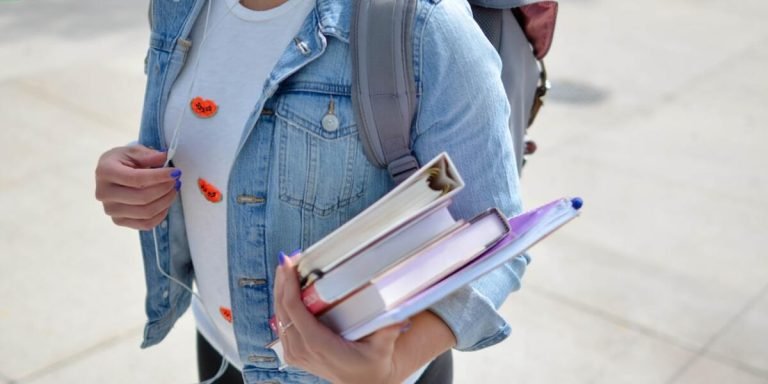Do I Have Sensory Issues? Understanding Signs and Symptoms in Your Child
Sensory issues afflict a considerable number of children, posing challenges to both parents and educators. The query “Do I have sensory issues?” is frequently asked by worried caregivers as they attempt to navigate the labyrinth of childhood behavioral patterns. These symptoms can often lead to difficulties in learning or socializing, thus making it crucially important for adults involved in a child’s upbringing and education.
Understanding and correctly interpreting these signs entails an intricate process that requires comprehensive knowledge about special education resources and support systems available. This article aims at demystifying this complex topic through lucid explanations on various aspects such as recognizing potential sensory problems, understanding their implications on your child’s development, exploring strategies for managing them effectively with appropriate interventions while accessing beneficial resources.
Did you know?
Fascinatingly, by the age of 6-7 years old, many children often outgrow sensory issues that were prevalent in their early childhood. However, about 1 in every 20 children have symptoms severe enough to affect daily life functions and activities.
Understanding Sensory Issues in the Context of Special Education
Sensory issues, often observed in children with special education needs, have a significant impact on their learning and interaction capabilities. These difficulties arise when the brain has trouble receiving and responding to information that comes through the senses. As parents or educators, it’s essential to understand these sensory challenges deeply as they can hinder routine activities or academic progress.
Technological advancements have revolutionized our approach to sensory issues, shifting from identifying problems to offering comprehensive solutions. Technology in educational settings now enables individual-specific learning methods tailored for children with sensory challenges.
Virtual reality (VR) technologies enable students with hypersensitivity disorders, such as Autism Spectrum Disorder (ASD), to learn social cues in calming environments. Adaptive devices also provide comfort by reducing disturbing ambient noises.
Nowadays there are numerous resources available online aiding special education requirements – this includes platforms offering innovative therapeutic exercises which combine digital engagement via apps enhancing sensitivity control among youngsters struggling with any form of dysregulation: be it auditory texture or proprioception; some even provide professional support regarding customizable lesson plan strategies focusing exclusively on learners’ unique abilities rather than limitations.
Overall, merging technology into traditional teaching practices facilitates novel ways of supporting those grappling with sensory concerns facilitating an inclusive environment catering specifically to diverse learner profiles present within classrooms today.
Identifying Signs and Symptoms of Sensory Processing Disorder
Sensory Processing Disorder (SPD) affects brain processing of sensory information. It often overwhelms children with environmental stimuli like sounds, smells, and textures. Recognizing its signs is crucial for parents and educators. To determine if your child might be experiencing sensory issues, look for these common symptoms:
1. Overly sensitive to touch: Some children with SPD may find clothing labels or tags uncomfortable; others may react more intensely than usual when they’re touched lightly.
2. High sensitivity towards sound: They could cover ears at loud noises like sirens or even everyday background noise like household appliances running which other kids normally wouldn’t notice.
3. Unusually picky eater: If a child has SPD, he/she may refuse foods based on texture rather than taste.
4. Difficulty balancing activities: These kids often struggle with tasks requiring coordinating movements between both sides of their body such as riding bikes.
5. Trouble focusing attention: Children suffering from SPD tend to get distracted easily because their brains can’t filter out irrelevant stimuli efficiently.
The Role of Occupational Therapy in Managing Sensory Challenges
Occupational therapy plays a vital role in managing sensory challenges. When parents ask themselves, “Do I have sensory issues?” these experts are usually the best people to turn for an accurate assessment. Sensory Issues can manifest in various ways from sensitivity to specific textures or sounds, difficulties with balance and spatial orientation, or even problems handling day-to-day activities.
In the current era of 2023 where technology is everywhere, occupational therapists utilize innovative educational resources and support that make significant strides in specialized education settings. The integration of technologies such as virtual reality (VR), touch-based tablets applications allow children with sensory impairments better grasp their surroundings by providing them real-time feedback on how they interact with objects around them.
Technology also allows personalized care plan development; every child’s needs vary exponentially considering no two cases of sensorial troubles might be alike! Data collected from tech-enhanced exercises give specialists detailed insights about individual progress rates over time – leading strategies designed explicitly catering unique requirements each one presents.
Furthermore, digital tools provide excellent opportunities for children who struggle socially due to perceived barriers imposed upon themselves as they deal those same concerns others may not easily comprehend: interactive gaming apps inflicting subtle social cues promoting comfortability amongst peers interaction reaping long-term benefits form overall wellbeing factor hugely underestimated often dismissed altogether!
Navigating Resources for Students with Sensory Integration Difficulties
Navigating the landscape of resources for students overcoming sensory integration difficulties can be arduous, but a critical task nonetheless. Grappling with questions like “Do I have sensory issues?” can incite confusion and anxiety in families. This is where technology steps in to create transformative experiences within the realm of education, particularly for those struggling with such problems.
The inclusion of modern technological tools has visibly improved special educational contexts by offering tailored solutions that cater to each child’s unique challenges. Virtual Reality (VR), an emerging trend seen prominently across 2023’s curriculum designs, focuses on delivering personalized multi-sensory environments capable of alleviating classroom anxieties while promoting focused learning amidst distractions.
In expanding support systems alongside these developments, it becomes crucial for schools and parents alike to stay apprised about newer apps or digital platforms specifically designed around children experiencing sensory struggles. These digital platforms not only educate young learners at their pace but also allow them a sense of control over their environment which encourages autonomy—a key aspect often overlooked when dealing with this subject matter.
Utilizing Assistive Technologies for Enhanced Learning Environments
As technology continues to advance, the educational sector is adopting an array of resources and tools that have a massive impact on students with sensory integration difficulties. One prime example lies in assistive technologies which are now helping many students overcome obstacles related to “do i have sensory issues” queries.
Assistive technologies comprise devices or software solutions that enhance learning environments for children who struggle with cognitive, physical, or other types of disabilities. They range from highly sophisticated applications like speech-to-text converters to simple aids such as colored overlays for reading instruction.
For kids experiencing sensory processing problems – where they may be excessively sensitive towards certain sensations like sound, touch while showing negligible responses toward others – these technological advancements can prove incredibly beneficial. It provides them additional support and facilitation necessary for optimal learning occurrences.
In fact, interactive whiteboards present one excellent illustration here – thus serving special education needs quite effectively through its multi-sensorial approach involving visual displays coupled with audio prompts making it easier especially when wondering if “do i have sensory issues”.
Moreover, computer-based training programs specifically designed around individualized education plans (IEPs) aid significantly by providing customized instructional materials catering directly towards their unique requirements thereby augmenting knowledge retention apart from enhancing overall engagement levels within classrooms.
Accessing Support Networks: Advocacy Groups and Online Communities
In a world that’s becoming increasingly digital, parents and educators are often left wondering “do I have sensory issues?” when it comes to helping students with their unique needs. Thankfully, there is a tapestry of resources available for navigating the education landscape specifically tailored to help improve learning outcomes for children with Sensory Integration Difficulties.
One critical avenue starts by accessing support networks. Advocacy groups and online communities – all play an integral role in this process. Collectively they contribute towards bridging gaps between technology integration in education and supporting special educational needs.
Advocacy Groups: These organizations provide valuable information on rights, accommodations, and strategies related to educating young learners who may experience sensory issues.Padding your knowledge about these essentials can significantly empower you while negotiating individualized plans at schools or institutions.
Online Communities: The advent of technology has brought forth several platforms where people share experiences dealing with similar challenges.Connecting here could potentially unlock solutions from real-life scenarios which textbooks seldom provide.They are possibly one click away through various social media forums or dedicated websites.Apart from serving as knowledge repositories- these spaces often render emotional support bolstered by empathetic understanding.Vital indeed considering the mental toll such circumstances might inadvertently invite alongside physical difficulties!
Creating Inclusive Educational Spaces for Children with Sensory Issues
In this digital age, creating inclusive educational spaces for children presenting sensory issues calls for innovative strategies. One field that has been instrumental to the success of these initiatives is technology integration in education. This approach introduces ease and efficacy into special education resources and support.
Technology provides a diverse range of tools specifically designed to cater to children with sensory challenges, thereby enhancing their learning experience considerably. Take interactive whiteboards or speech recognition software as examples; they endow children grappling with communication problems due to sensory difficulties an opportunity at self-expression – promoting inclusion.
Furthermore, technologies like Augmented Reality (AR) and Virtual Reality (VR) offer visually stimulating environments that can engage learners who struggle from focus-related hurdles triggered by such conditions. These assistive technologies are not just considered futuristic novelties but have become indispensable elements within mainstream classrooms too – reflecting on how serious ‘inclusion’ is taken in 2023’s pedagogical realms.
Moreover, tech-integrated curriculum fosters independence among students while encouraging peer collaboration simultaneously—essential life skills every child must possess regardless of their neurological composition.
Nevertheless, technology should complement traditional teaching methods instead of replacing them entirely—a balanced blend ensures each child receives assistance tailored uniquely towards his or her needs—an epitome of successful inclusivity indeed! As partners navigating through childhood education—one thing we must remember: adapting the environment based on student needs is paramount than making students adapt themselves fitting into conventional moulds.
Strategies Teachers Can Implement to Accommodate Diverse Needs
As we make strides towards creating inclusive educational spaces, it becomes imperative for teachers to be well-equipped with strategies that can accommodate the diverse needs of students. Especially important is understanding “do I have sensory issues?” – a recurring question in children struggling with sensory disorders.
One key strategy involves utilizing technology integration in education. Technology has transformed learning environments and provided an array of tools for special education resources and support. By integrating appropriate technological aids such as Interactive Whiteboards (IWBs), Augmented Reality (AR) apps, or virtual reality programs into their teaching methods, educators can create engaging lessons catering specifically to those dealing with sensory challenges.
Another effective technique focuses on developing individualized learning plans tailored specially around each student’s unique requirements. These personalized curriculums are not merely limited to traditional academic subjects – they also include crucial life-skills training like stress-management techniques and social interaction norms which could potentially aid grasping and comprehending complex concepts better.
Teachers should consider incorporating more hands-on activities within their lesson plan: these engage multiple senses simultaneously aiding information retention remarkably amongst learners diagnosed with sensory concerns. Using tactile materials like clay or foam models further enhance knowledge acquisition by transforming abstract theories into tangible realities.
Designing a Classroom Setup Conducive to Sensory Wellness
Fostering a classroom environment conducive to sensory wellness is an invaluable step in promoting inclusive education for children with sensory issues. When designing this space, it’s essential to consider how “do I have sensory issues” can be addressed through thoughtful layout and equipment choices.
The first aspect of creating such a setup involves selecting furniture that encourages comfort and focus. This could mean investing in stability balls instead of traditional chairs or utilizing adjustable desks where height can be modified according to each child’s needs. In addition, incorporating tactile materials like fidget spinners or stress-relief toys into the regular seating arrangement may also aid in soothing heightened senses during class time.
Conclusion
In conclusion, if you’re still wondering “do I have sensory issues?” about your child even after reading this post, remember it’s always best to consult with a professional. They can provide in-depth assessments and guidance that is tailor-made for your little one’s needs. Early identification helps to orchestrate the appropriate strategies and support systems necessary to ensure your youngster thrives.
However, understanding subtle signs of sensory issues may feel like learning an entirely new language – but rest assured you are not alone! We encourage parents and educators alike to explore our website further. It is brimming with valuable resources designed specifically towards educating children effectively whilst also strengthening parent-educator relationships through various articles on childhood education topics.
Keep learning; keep growing – we’re here every step of the way.







